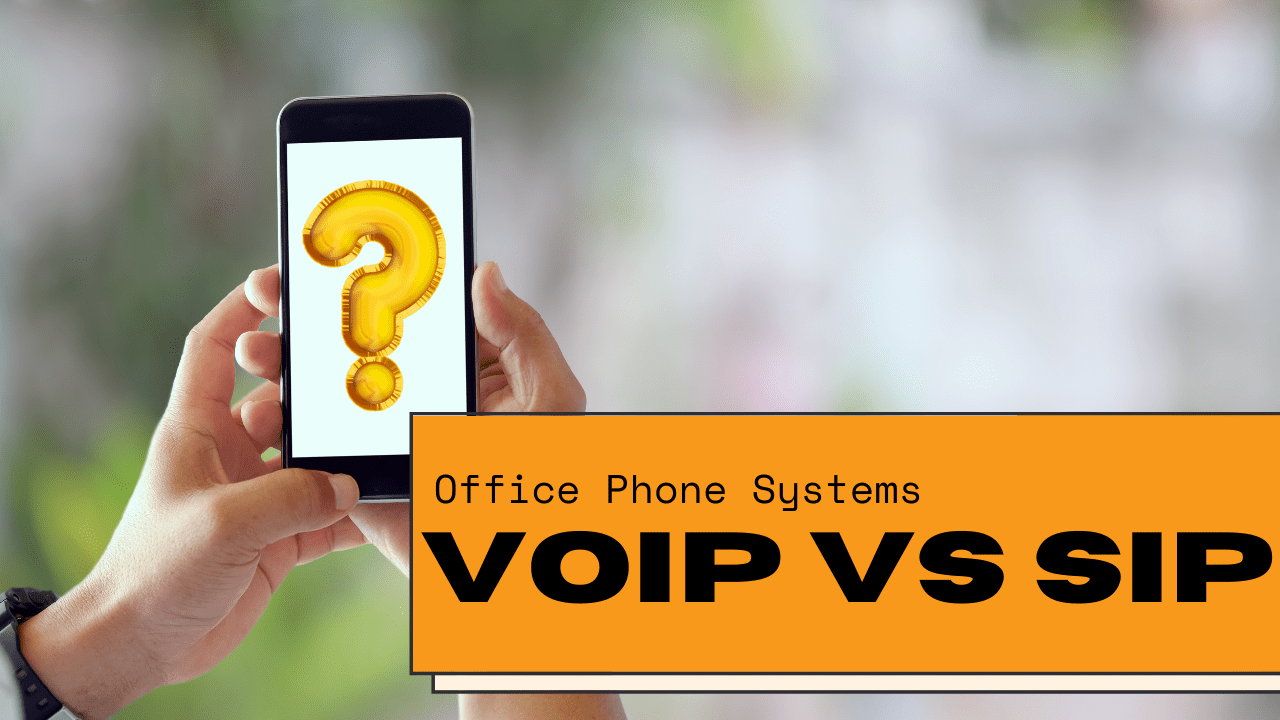Phone calls, video messages and call waiting may all seem second nature in today’s world. Your company depends on having reliable communication. At the very least, you expect to be able to pick up your phone and instantly be connected to the other line.
Now, think about the terms VoIP and SIP. These terms are popular when talking about modern-day phone systems, but what exactly do they mean? Sometimes these terms are used interchangeably. While they are not the same thing, they do work together.
We break down the differences between the two and how they work together in this article.
What is VoIP?
VoIP is taking the landlines out of the equation and replacing them with the internet.
Voice Over Internet Protocol, also known as VoIP, is a large blanket term that encompasses calls made over the Internet. When using VoIP, phone calls are sent using the internet you already have!
Think about it like a phone system that uses internet lines to send and receive calls instead of traditional landlines. VoIP phone system functionality remains the same as a conventional phone system, including long-distance calls, call forwarding, voicemail, and more.
Similar to landlines, VoIP systems only allow voice communication and don’t support video calls and other forms of multimedia communication.
If you have an older phone system but want to move to VoIP, don’t worry. There are solutions for older phone systems that include installing some onsite hardware that adapts your existing system to run as a VoIP system.
If you are in a new space with new hardware and data wiring ready to go, you are probably already set up for a VoIP option. Of course, VoIP could also work wirelessly over WiFi if needed! The VoIP phone doesn’t need to stay in one place to work! If you have internet access, the phone system will work.
Let’s break down using a VoIP phone system in a modern-day work scenario.
You can use your conference phone in the morning for a large kick-off meeting. Then, go home for lunch and make client calls from your cell using a VoIP app. Spend the rest of the afternoon in a cafe while making calls from your computer. When you have VoIP-enabled devices, you can bring your office number and perks. Obviously, this is hardware-dependent, but on the whole, VoIP services are available anywhere you have internet access.
Do not worry about compatibility issues! Whoever you’re calling does not also need to have a VoIP phone. You will be able to connect with systems using the traditional phone systems as well.
How Does VoIP work?
VoIP works by connecting to a VoIP provider using different protocols, using servers or the cloud to connect you.
What is a protocol?
A protocol is a system of hardware rules that allow the exchanging of data or messages. It will enable all kinds of technology and hardware to communicate with each other. Many protocols are used in technology, including some you may recognize, like HTTP or DNS.
What are the Benefits of VoIP?
VoIP systems are reliable because they work with the cloud rather than a single piece of hardware. The main requirement for VoIP is having steady internet and VoIP-compatible hardware. Implementing a VoIP system is generally straightforward because there is no new large, technology-heavy equipment needed.
VoIP will inevitably save you money because it relies on systems you already have and doesn’t need expensive equipment. It does not always need on-premise hardware. Some monthly costs you will be paying for VoIP are for the service, typically broken down by the number of users and other hardware rentals if needed.
VoIP does not need any fancy technology to work. Some providers only require a softphone app that you can access on your smartphone or laptop, turning them into your office phone! However, VoIP phones need to be connected to a network in some form.
TIP: If you want to check out if your internet can handle a VoIP system
What is SIP?
Session Initiated Protocol or SIP Phones are phone systems that use the internet instead of traditional phone lines. Sound familiar? VoIP and SIP may seem similar, and in many ways, they are.
SIP lines need VoIP technology to work, but they also provide many different options besides just the traditional phone call.
Time to get technical. SIP is an internet protocol that can be used to implement VoIP. It’s the industry standard for protocols. VoIP can transfer voice data over the internet. SIP can transfer more extensive data, including voice, text and even video. Using VoIP alone will limit your capabilities.
By including a SIP trunk in your existing system or getting a new system, you open up the option to scale your tech. Also, SIP phones can work independently from a computer.
SIP lines are used to add SIP capabilities to your phone systems, and multiple SIP lines create a SIP trunk; with SIP Trunking, you can take your existing IP PBX system to the cloud.
SIP Trunking allows you to harness the cloud’s benefits and bring them to your current system. This gives a new life to your technology and opens up a whole new world of possibilities. A SIP Trunk is not a physical line but a virtual connection between you and a service provider.
SIP Trunking allows for scalability.
You have the option to add and remove trunks as you wish. You can sometimes customize your plan to only pay for what you use! There are a variety of plans available that include metered and unlimited, depending on the provider.
So, it isn’t really a VoIP vs SIP world, but instead, they are close friends who rely on each other to create seamless communication.
SIP requires VoIP to work, but VoIP doesn’t necessarily need SIP.
Phone systems are a large and sometimes confusing world, but strong communication is paramount in society today. If you want to learn more about office phone systems, check out our page.
If you want to learn more about office phone systems and a device that could work for you, reach out to connect with one of our tech account representatives today!
Emily Adams
Digital Content Specialist
Office Interiors






